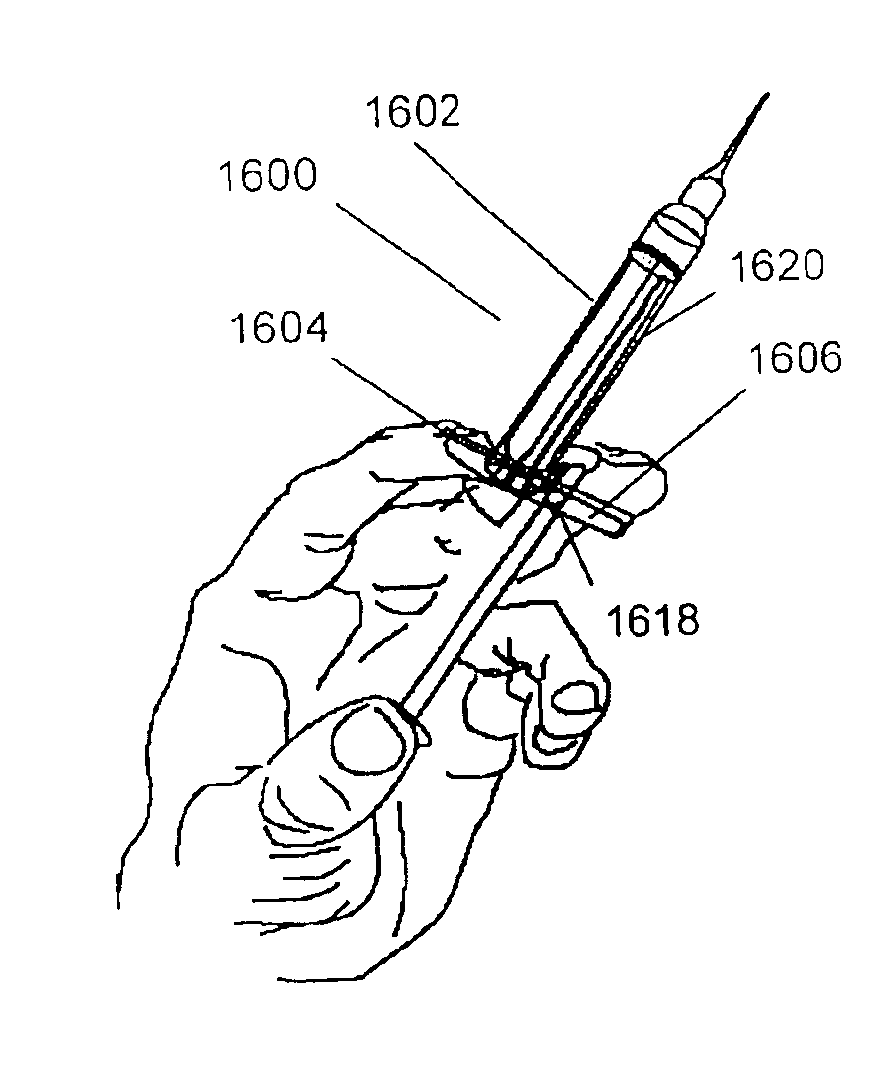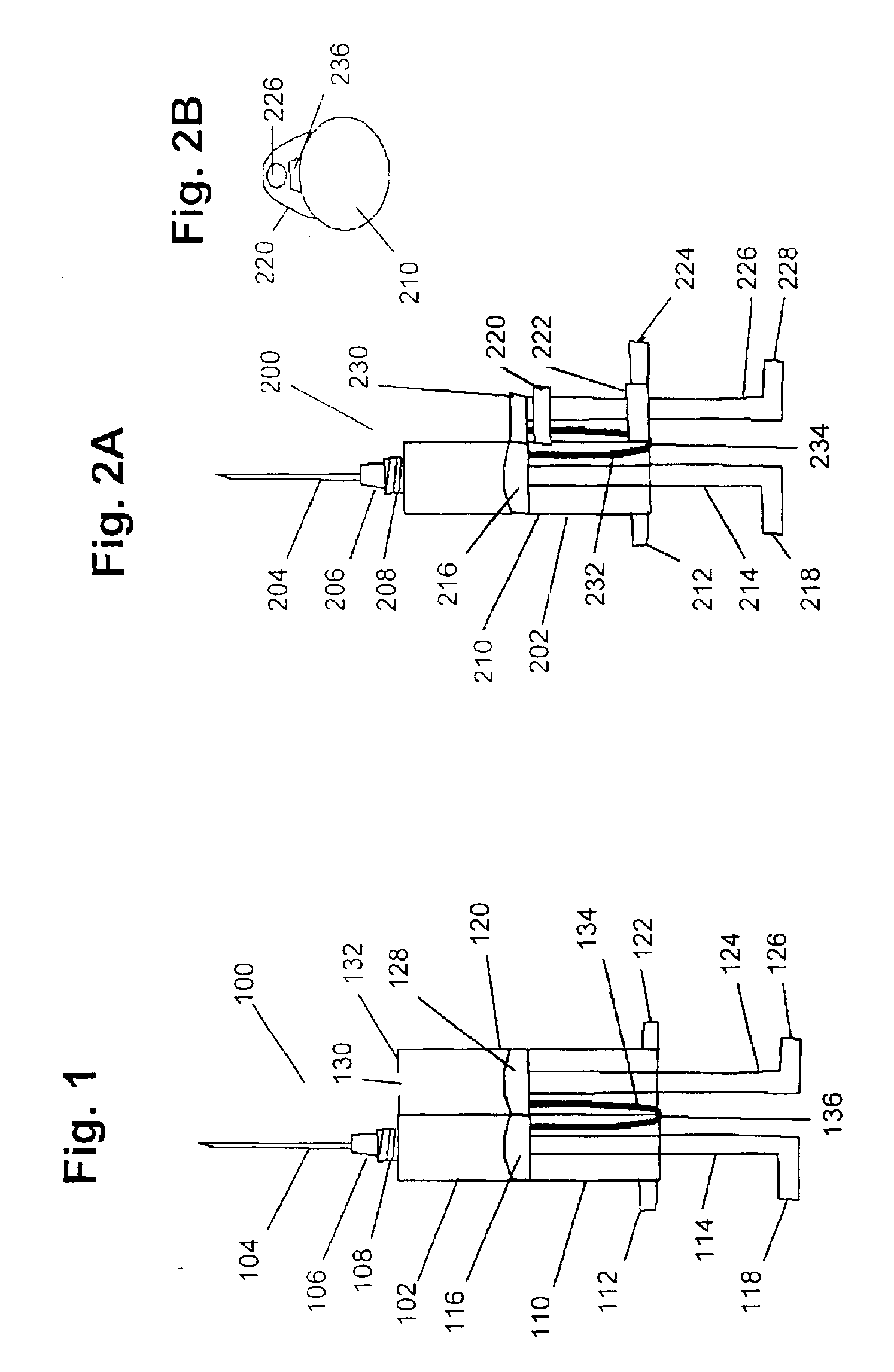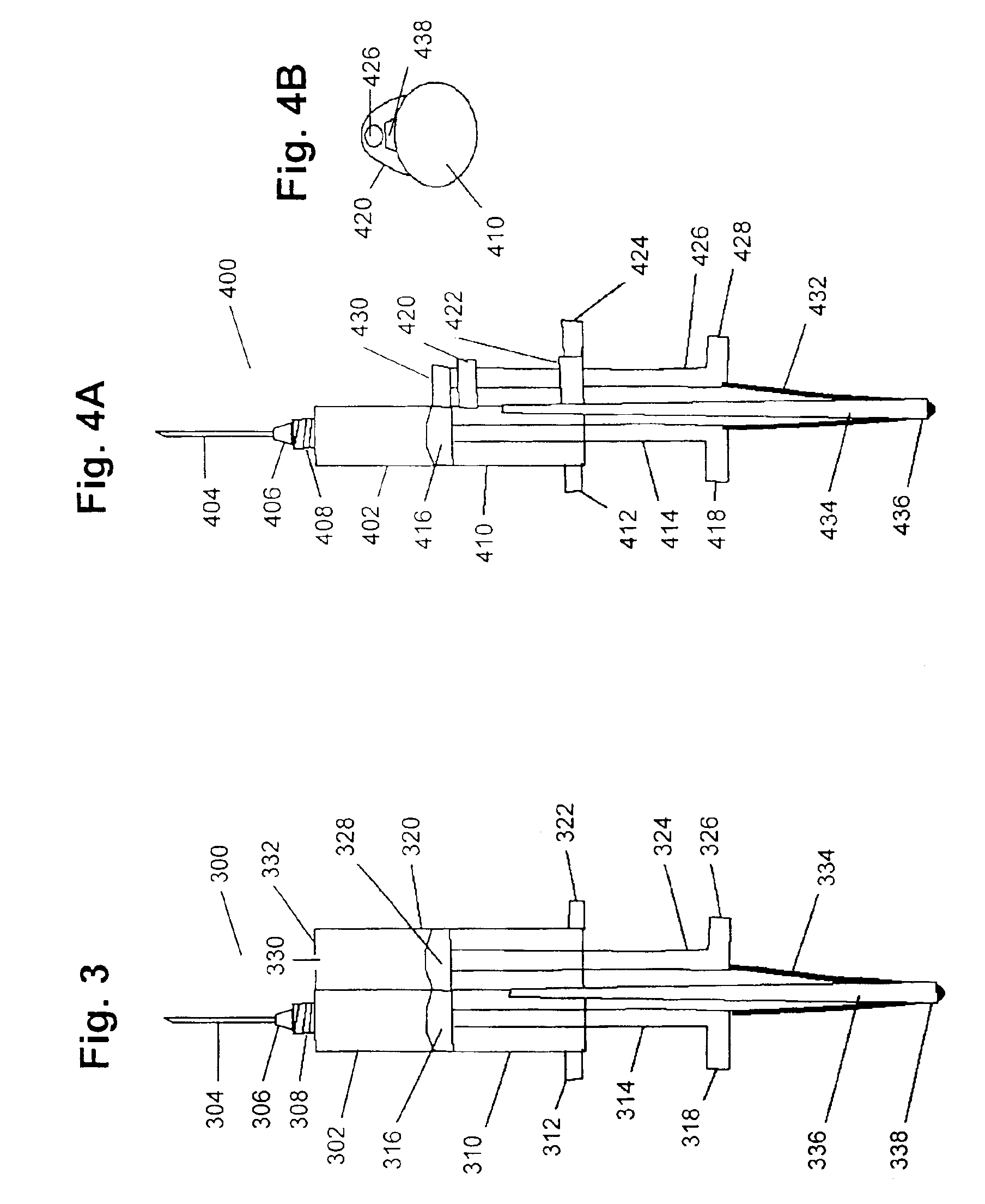Reciprocating syringes
- Summary
- Abstract
- Description
- Claims
- Application Information
AI Technical Summary
Benefits of technology
Problems solved by technology
Method used
Image
Examples
Embodiment Construction
Definitions
[0039]For the purposes of the present invention, the term “axial direction of a syringe” refers to the line along a center axis of a syringe from its distal end to its proximal end or from its proximal end to its distal end.
[0040]For the purposes of the present invention, the term “proximal” refers to a direction towards a user of a syringe. For the purposes of the present invention, the term “distal” refers to a direction away from the user of the syringe.
[0041]For the purposes of the present invention, the term “reciprocating member” refers to plungers, sliders, thumb rest mounted on a belt, plunger with teeth on one side, etc., which is connected to a syringe plunger by a reciprocating device and moves in a direction opposite a direction of motion of the syringe plunger to which the reciprocating member is connected.
[0042]For the purposes of the present invention, a “reciprocating device” refers to a device which combines the functions of connecting a syringe plunger t...
PUM
 Login to View More
Login to View More Abstract
Description
Claims
Application Information
 Login to View More
Login to View More - R&D
- Intellectual Property
- Life Sciences
- Materials
- Tech Scout
- Unparalleled Data Quality
- Higher Quality Content
- 60% Fewer Hallucinations
Browse by: Latest US Patents, China's latest patents, Technical Efficacy Thesaurus, Application Domain, Technology Topic, Popular Technical Reports.
© 2025 PatSnap. All rights reserved.Legal|Privacy policy|Modern Slavery Act Transparency Statement|Sitemap|About US| Contact US: help@patsnap.com



